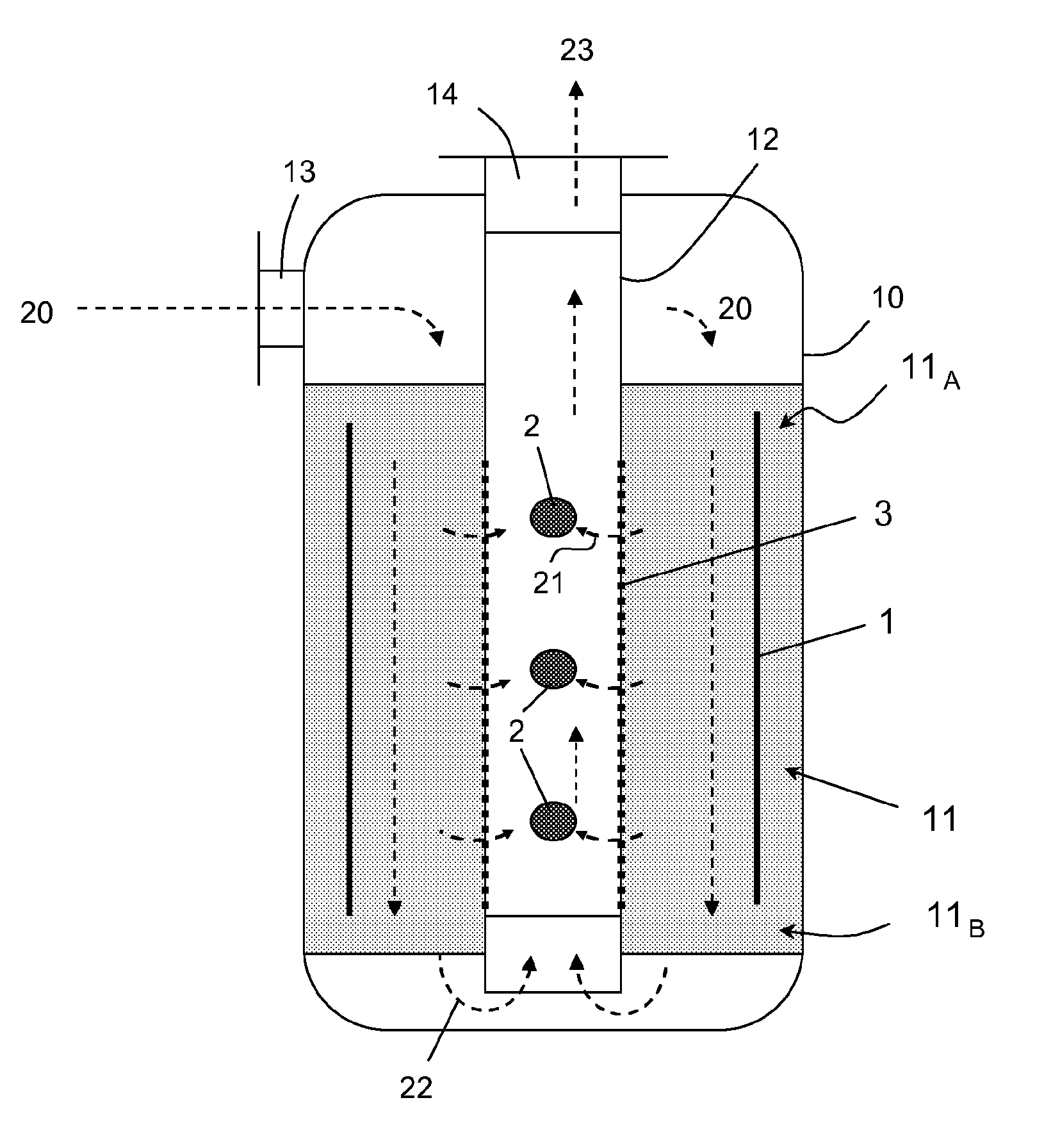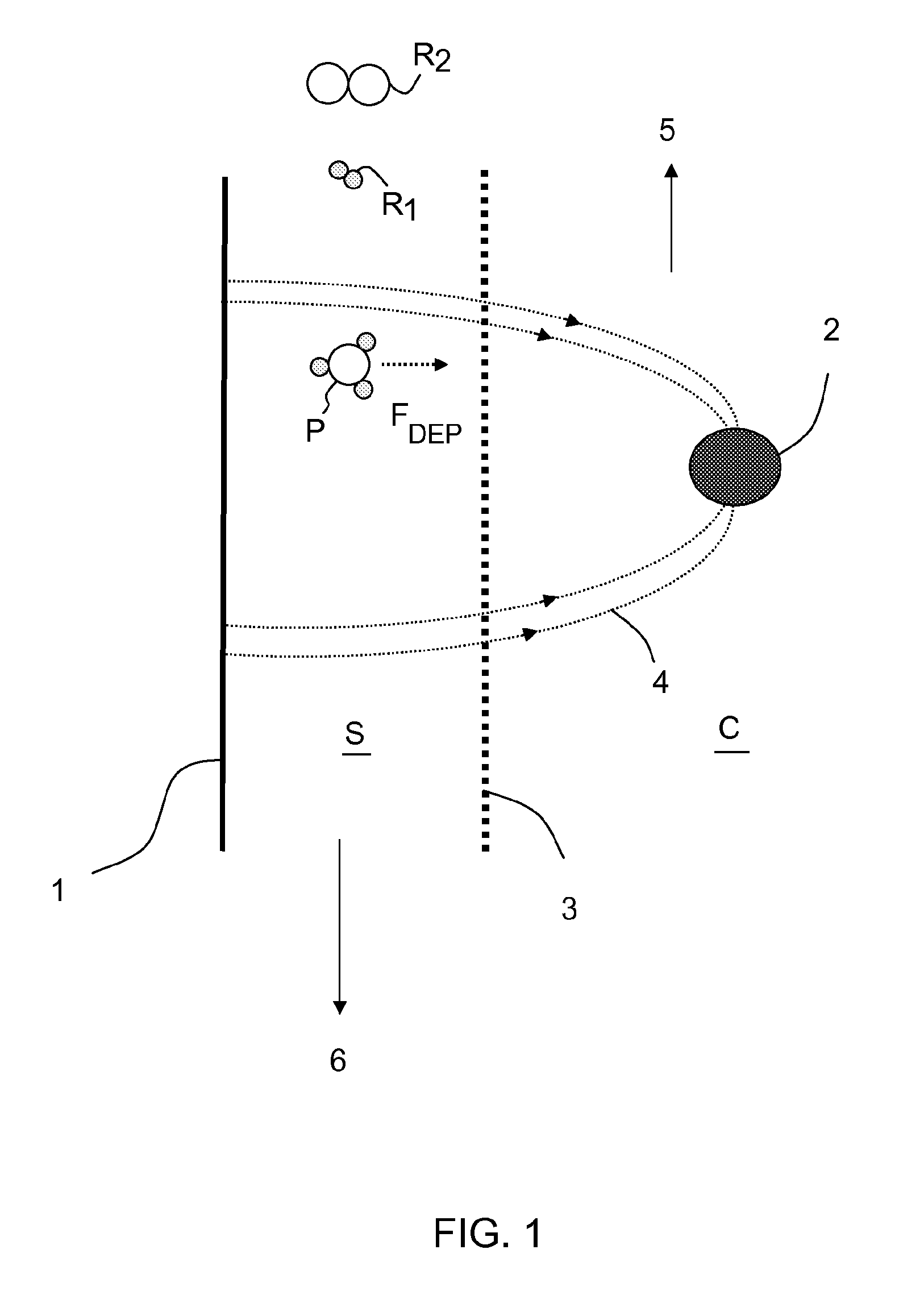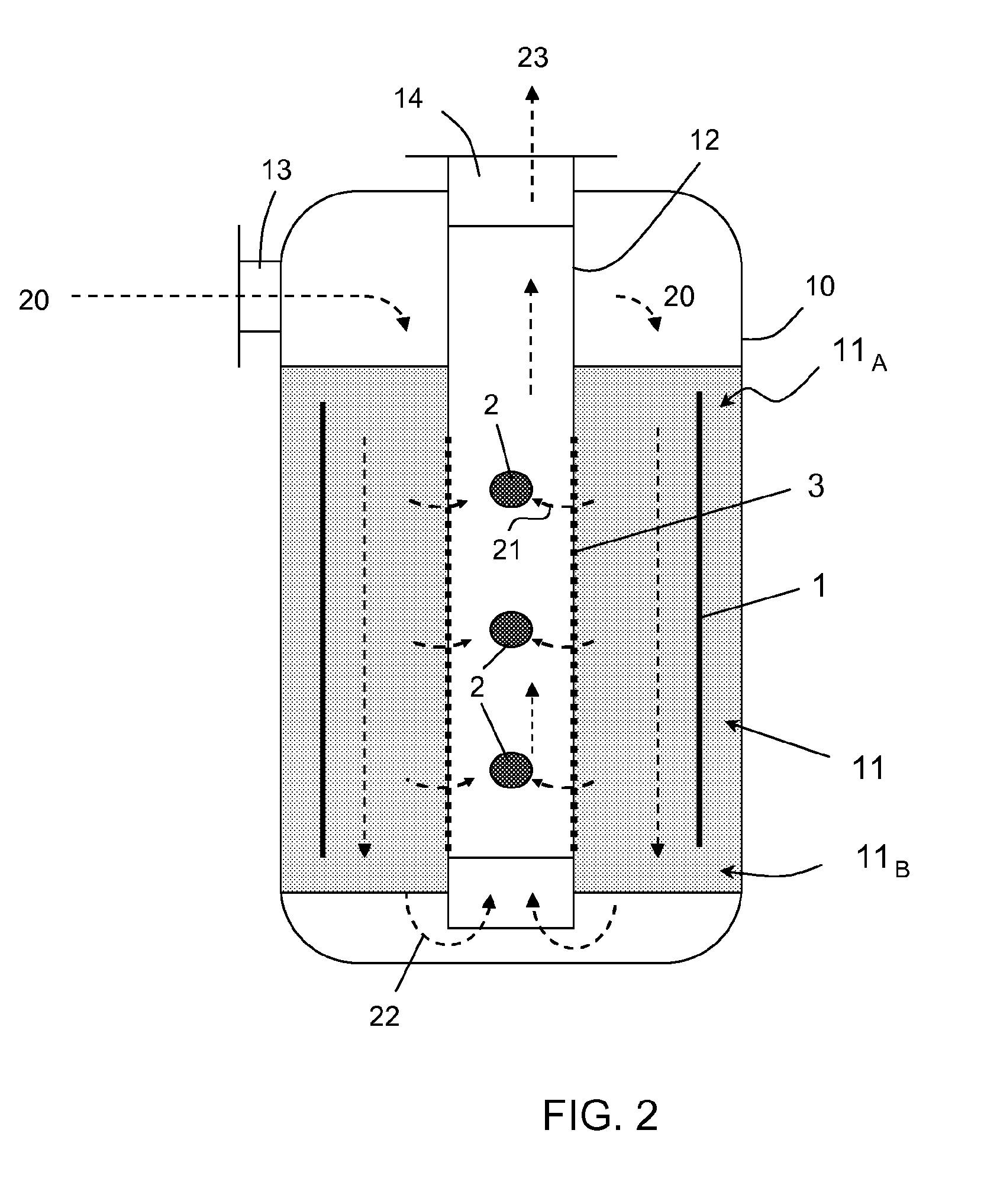Process for selective removal of a product from a gaseous system
a gaseous system and product technology, applied in the direction of specific gas purification/separation, chemical production, electrodialysis, etc., can solve the problems of poor efficiency, less selective, poor efficiency of the membrane-based system, etc., to improve the conversion rate, improve the efficiency, and improve the conversion rate
- Summary
- Abstract
- Description
- Claims
- Application Information
AI Technical Summary
Benefits of technology
Problems solved by technology
Method used
Image
Examples
example
[0083]An example of application of the invention to a three-bed quenched converter is presented.
[0084]FIG. 4 discloses a bottle shape converter according to a quench-interchanger design. This converter is known e.g. from U.S. Pat. No. 4,735,780 and is not described in detail. FIG. 5 discloses a flow diagram of the converter. Basically, the converter comprises: a vessel 130, a catalytic cartridge 131, said cartridge containing three catalytic bed 132, 133 and 134; a shell-and-tube top preheater 135, an inter-bed heat exchanger 136 traversed by the gas flow between the second bed 133 and the third bed 134. The inter-bed exchanger 136 is a tube bundle heat exchanger.
[0085]A feed gas stream 101 enters the converter through a bottom nozzle 137 of the vessel and flows upward flushing the vessel in an annular space 138 between the vessel 130 and the cartridge 131. Having reached the top of the converter, the feed gas enters the shell side of the top preheater 135 where it is preheated by c...
PUM
| Property | Measurement | Unit |
|---|---|---|
| voltage | aaaaa | aaaaa |
| electric field | aaaaa | aaaaa |
| size | aaaaa | aaaaa |
Abstract
Description
Claims
Application Information
 Login to View More
Login to View More - R&D
- Intellectual Property
- Life Sciences
- Materials
- Tech Scout
- Unparalleled Data Quality
- Higher Quality Content
- 60% Fewer Hallucinations
Browse by: Latest US Patents, China's latest patents, Technical Efficacy Thesaurus, Application Domain, Technology Topic, Popular Technical Reports.
© 2025 PatSnap. All rights reserved.Legal|Privacy policy|Modern Slavery Act Transparency Statement|Sitemap|About US| Contact US: help@patsnap.com



